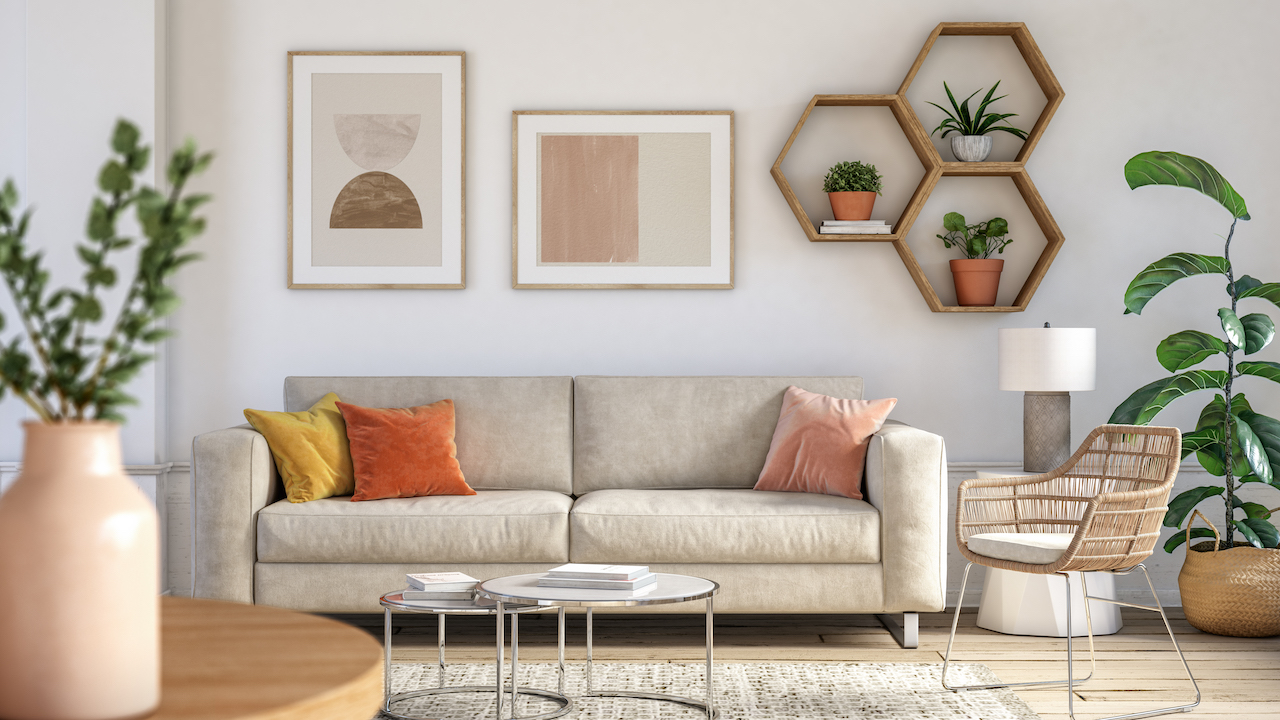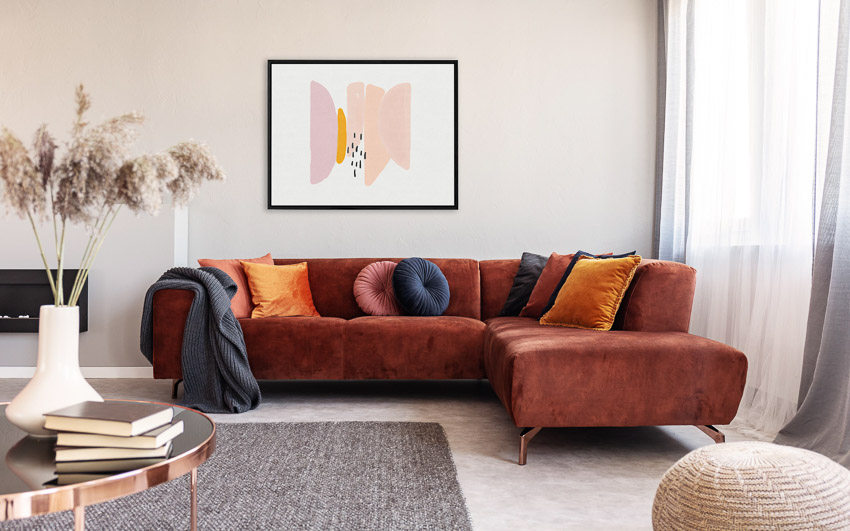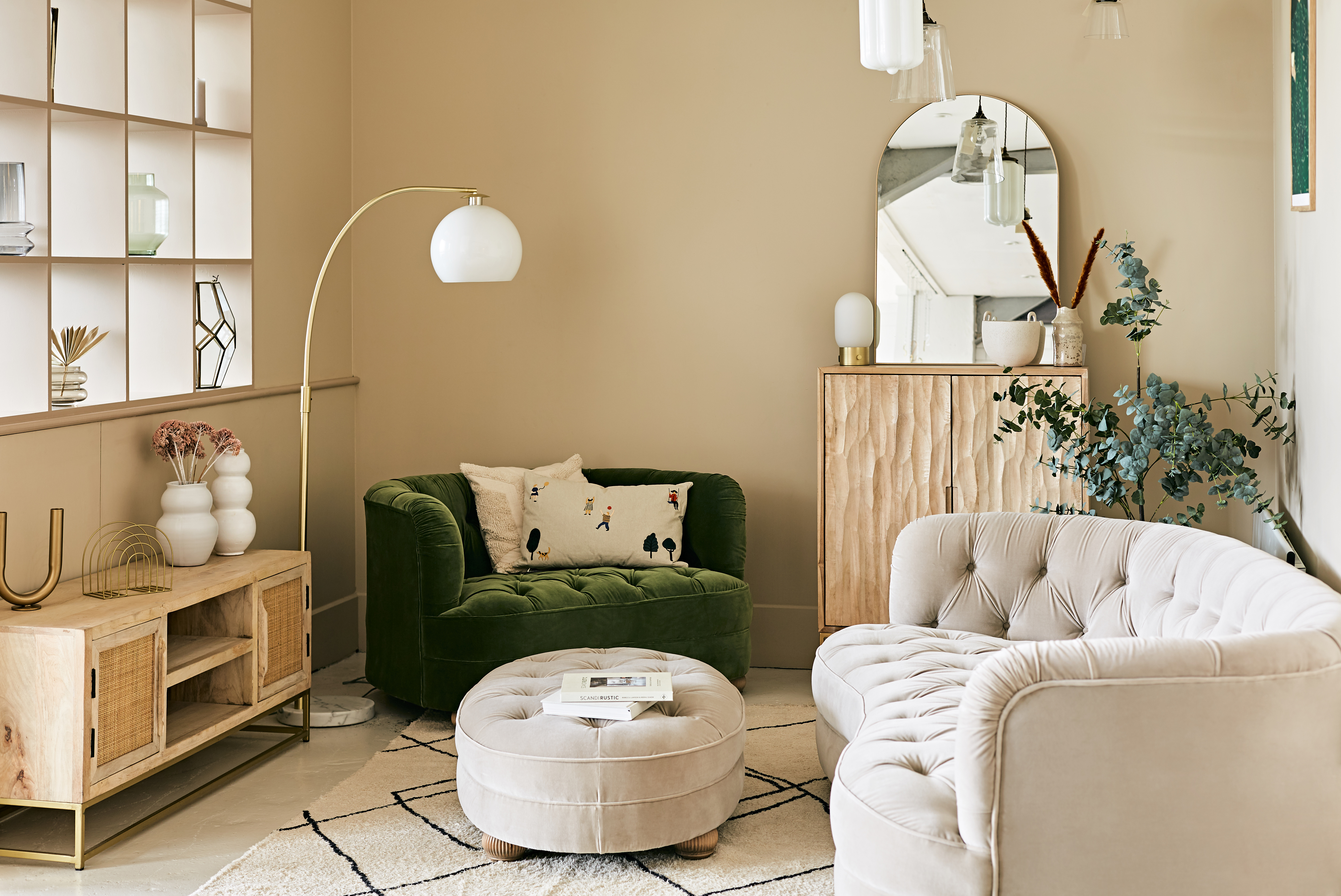Welcome to our blog on interior design guidelines for decorating your house! Whether you’re moving into a new home or looking to refresh your current space, decorating can be both exciting and overwhelming. With so many options to consider, it’s easy to get lost in the details. That’s why we’ve compiled a list of seven essential interior design guidelines to help you create a space that’s both stylish and functional. From choosing the right furniture to adding the finishing touches, we’ve got you covered. So sit back, grab a cup of coffee, and get ready to transform your home into a beautiful and welcoming space!
1. Allow Adequate Space for Sofas
When designing your living space, consider both practicality and aesthetics. To ensure comfortable seating, it is recommended to keep at least 45cm between your sofa and the central coffee table. Any less than that can be cramped, while too much more can make reaching for a drink or book uncomfortable.

2. Pick a Focal Point
Every room needs a focal point or hero piece that stands out and adds character. This could be a bold-colored, oversized piece of furniture, a beautiful rug, a unique artwork, or even a feature wall. Interior design experts suggest selecting a statement piece that guests will immediately notice upon entering the room.

3. Create the Illusion of Height
If you have low ceilings, select low-profile furniture such as sofas and coffee tables to make your ceilings appear higher. You can also mix low-profile furniture with tall, slim bookshelves that draw the eye upward. This mixture of heights will also create a comfortable ambiance in your home.

4. Create layers
Instead of overwhelming a room with too many elements at once, think of creating layers to build depth and interest. Use color, texture, pattern, fabric, surface treatments, lighting, art, plants, and books to add personality and warmth to a space. Start with a dominant fabric, such as a rug or curtains, and layer smaller-scale fabrics for cushions and lampshades.

5. Choose artwork carefully and hang it properly
When hanging pictures or paintings, consider the scale and placement. The perfect height is at eye level, around 145cm from the floor to the center of the artwork. If you have a smaller picture, try hanging it above a side table or next to a lamp for a more intimate feel. When hanging a gallery wall, hang the main picture at eye level and arrange the others in relation to it.
6. Get the lighting right
When choosing pendant or chandelier lighting for a dining table, aim for a fitting that is between half and two-thirds of the width of the table. The same rule applies to long, slim light fittings – maintain the same half-to-two-thirds ratio but apply it to the table’s length. Proper lighting can enhance the ambiance of a space and make it feel more welcoming.

7. Mix up shapes
To break up the rectangular and square shapes in a living room, consider adding different shapes such as circles. A round coffee table, side tables, rug, wall hanging, or mirror can add interest and variety. Large-scale mirrors can make a statement and visually enhance the sense of space in smaller rooms.

In conclusion, creating a beautiful and functional living space doesn’t have to be a daunting task. By following these essential interior design guidelines, you can bring your vision to life and create a space that’s both stylish and comfortable. Remember to choose a focal point, create layers, and pay attention to details like lighting and greenery. Mix old and new elements for an eclectic look and choose a color scheme that reflects your personality. Whether you’re working with a small apartment or a spacious home, these tips will help you create a space that’s uniquely yours. So start exploring, experiment with different ideas, and have fun with the process. Happy decorating!

